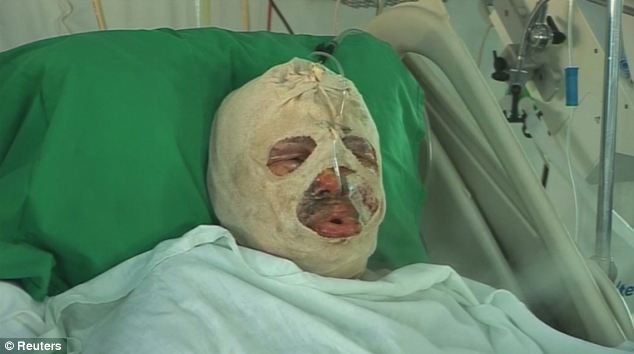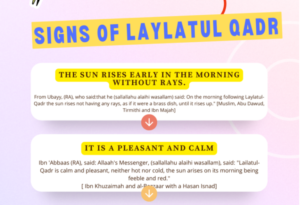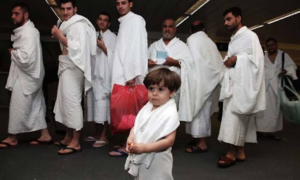Assalamu Alaikum,Living in a Cozy and luxurious Room with all the blessings of Allah Poured unto us we cherish our life and forget our brothers and Sisters suffering every Moment in War struck Countries like Lebanon, Syria, Afghanistan, Palestine,etc.With War and violence at home, exploitative smugglers and risky seas along the way, an uncertain welcome and future on a foreign continent ,life of these People are very tough.Refugees and asylum seekers are ordinary people facing extraordinary struggles She said: ‘They told us they wouldn’t cut support for those who have medical cases – my husband had a lung abscess and does not work.’Three of her children also have a blood condition and the family had relied on the aid.‘I chose death, I chose death rather than seeing my children die a million times in front of me,’ she told a CNN reporter.We asked the UNHCR how this could happen. Aid to families was being cut, they said. Donor governments had so far given only 14 percent of what was needed for that year’s budget. The tragedy might show everyone just how bad things were, the UNHCR spokeswoman said, optimistically.As in my first meeting with the Dahers, Ala’a(the Eldest Daughter) spoke for the family. She was like her mother, a strong personality. Ala’a thought Mariam had been broken by the daily humiliations of being a refugee. “Wallahi — I swear — we value our dignity above anything,” she said. “We wonder: How have we come to this? Subject to charity, to pity, to the whims of those who confer favor, or not, who choose what to give, or not to give. Fa, the human being has dignity above all. We are scolded like children and insulted. No one can tolerate that. ‘Go away. Leave here.’ Until when?”That was March 2014. There were a couple of days of news reports about Mariam’s self-immolation, but the story was soon forgotten. Today, three quarters of the way through 2015, the UNHCR has only 35 percent of what it needs for the year. When Mariam set herself alight, the food cards were loaded with $30 a month for every refugee. Now it is $13.50. And since last month, the UNHCR has been forced to remove 136,000 refugees in Lebanon from food assistance.Four million refugees — 7.6 million displaced inside Syria. There are many like her.This Article first Appeared in Global Post
She said: ‘They told us they wouldn’t cut support for those who have medical cases – my husband had a lung abscess and does not work.’Three of her children also have a blood condition and the family had relied on the aid.‘I chose death, I chose death rather than seeing my children die a million times in front of me,’ she told a CNN reporter.We asked the UNHCR how this could happen. Aid to families was being cut, they said. Donor governments had so far given only 14 percent of what was needed for that year’s budget. The tragedy might show everyone just how bad things were, the UNHCR spokeswoman said, optimistically.As in my first meeting with the Dahers, Ala’a(the Eldest Daughter) spoke for the family. She was like her mother, a strong personality. Ala’a thought Mariam had been broken by the daily humiliations of being a refugee. “Wallahi — I swear — we value our dignity above anything,” she said. “We wonder: How have we come to this? Subject to charity, to pity, to the whims of those who confer favor, or not, who choose what to give, or not to give. Fa, the human being has dignity above all. We are scolded like children and insulted. No one can tolerate that. ‘Go away. Leave here.’ Until when?”That was March 2014. There were a couple of days of news reports about Mariam’s self-immolation, but the story was soon forgotten. Today, three quarters of the way through 2015, the UNHCR has only 35 percent of what it needs for the year. When Mariam set herself alight, the food cards were loaded with $30 a month for every refugee. Now it is $13.50. And since last month, the UNHCR has been forced to remove 136,000 refugees in Lebanon from food assistance.Four million refugees — 7.6 million displaced inside Syria. There are many like her.This Article first Appeared in Global Post
The Woman who Lit herself before the Office of UN High Commissioner for Refugees
BEIRUT, Lebanon — It was March 2014. Two-and-a-half-thousand Syrians arrived at Lebanon every day. Many ended up in the northern city of Tripoli. By 8 a.m. there was a long line outside the grey concrete walls of the UN compound. Within a week, the United Nations registered its one-millionth refugee in Lebanon. The UN agency that is supposed to look after these people, the UNHCR, couldn’t cope. There wasn’t enough money. It was even cutting aid for the refugees already there. Some of them came to the compound, too as the line got longer.People didn’t talk much. They just stared ahead, and waited. Near the entrance, though, a woman in a black abaya and hijab started shouting. She was small but her voice cut through the noise of traffic in the distance. “I’ve been coming here to get food for my children for three days.” Everyone looks. This is Mariam al-Khawli. She was from a small town just over the Syrian border. She had four children, a sick husband. “Every time I come, I get turned away,” she shouts. “Every time, they promise to help if I come back tomorrow. Those promises are empty.”Then she did something unthinkable. She poured gasoline over her head and set herself alight.For a couple of days of headlines, Mariam was a symbol of how desperate the refugees had become. That was the word we all used in the reports to explain what she had done: “desperate.” But Her terrible act of self destruction outside the offices of the UN High Commissioner for Refugees, (the UNHCR) had a Story behind It.This Story is taken from Global Post,By Paul Wood,A BBC foreign Correspondent. In August He went back to see Mariam’s family to get the whole story, from the beginning.Like many ordinary people who do something extraordinary, the details of Mariam’s life were both typical and revealing. What happened to her family happened to many refugees, millions of them, who fled Syria.Mariam had come from Tal Kalakh, a Syrian farming town of 20,000 people. There were mosques and two- or three-story breezeblock homes, all set in the green hills close to the Lebanese border. She lived there with her husband, Ahmed Daher, and their four children. Their house had a small garden with a peach tree and a walnut tree.In the spring of 2011, Syria caught the fever sweeping the rest of the Arab world. People took to the streets to demand more freedom. At first, they did not call for President Bashar al-Assad to go. Many hoped only that he would reform the one-party state he had inherited from his father. When the protests began in Tal Kalakh, Mariam’s family stayed away. “Politics is not my business,” Ahmed thought. He didn’t watch the news. He stuck to driving the vegetable truck he owned. Mariam just wanted to get their four children a good education. The extended family thought that was odd. No cousins, aunts or uncles had been to college. But that was Mariam’s ambition for her children.Everything began to change one day in May after Friday prayers. More than 3,000 people marched through the town, chanting: “The people! Want! The fall of the regime!” Men in uniform blocked their way. The mukhabarat, the plain-clothed secret police, stood behind the uniformed men, giving orders. Ahmed stopped his truck at a gas station across the road. “Go home!” a loudspeaker ordered. “Disperse! We will shoot.” The men in uniform raised their Kalashnikovs. The two sides were barely 10 yards apart. No one in the crowd moved. No one believed the security would fire. It was still the beginning of the uprising.Everyone waited.There was a sound like firecrackers. Rifle shots. Thousands of people ran in blind, disbelieving panic. A neighbor’s son lay on the ground, hit by a bullet. Others fell, dead or wounded. That is how Ahmed remembers it. “It was a peaceful demonstration, no weapons, nothing,” he said. He drove home as fast as he could to tell everyone what had happened. But they already knew. Women were in the street, ululating. People shouted: “They fired. They fired.”“Beat us, yes, we expect that perhaps,” Ahmed said. “But no one thought they would actually shoot.” Ahmed and Mariam decided they would now join the protests. Around the country, others did the same, their minds made up by the regime’s violence. In Tal Kalakh, though, there were no more big demonstrations. It wasn’t safe. Instead, people gathered in small groups on side streets and in orchards outside the town.Then, the arrests began. Some said more than 1,000 people were detained that summer in Tal Kalakh. “They took whoever went out to call for freedom,” Ahmed said. The prisoners came back with broken bones and marks from electric shocks or cigarette burns. Some did not return at all. “They took two young men, twins, a lawyer and doctor. They didn’t just arrest them. They killed them. Their mother lost her mind. The town was calm on the outside but it was boiling underneath. It felt like it would explode at any minute.”Ahmed told me the story of what happened next. At this point, it has entered Tal Kalakh folklore. The Daher family lived near the army barracks. The troops were not allowed cell phones, or TV. They were not allowed out. Officers had suspended all leave because soldiers who went home rarely returned. One night a soldier found a way to slip away to visit a nearby grocery store. A television was on: Al Jazeera. The soldier saw refugees lifting razor wire and streaming into Turkey. A woman in a headscarf was being interviewed. He watched. He couldn’t believe it.“That’s my mother. What’s happening?”“The regime is killing people,” the shopkeeper said.“What in the name of God is going on out here?”“The whole country’s been turned upside down and you have no idea?”“I swear, no. It’s like a prison inside the barracks. They told us: ‘It’s Israel. It’s militant gangs.’ But that’s my mother.”The soldier went back to the barracks and gathered his friends. They decided to escape. He shot the officer who had said they were fighting Israel. There was a gun battle inside the barracks: loyalists against defectors. The violence spilled into the streets as the defectors fled. The whole of Tal Kalakh watched green tracer fire arc back and forth across the town. There was nothing on state TV about it, of course, but by lunchtime the next day everyone knew what had happened. The Dahers’ street buzzed with the story of the soldier and the soldier’s mother. The shopkeeper swore it was true.The defecting soldiers joined a new organization called the Free Syrian Army. The armed rebellion had begun.The FSA began to appear everywhere there were people who supported the uprising. The war arrived in Tal Kalakh one evening in May 2011, when the regime decided to make an example of the town. Tanks and armored vehicles drew up along the main road outside. In the early hours of the morning, the shelling began. Mariam, Ahmed and three of their children hid in a bathroom in the center of the house. Their daughter Ala’a, their oldest child, was away taking exams in the capital, Damascus. No one slept during the bombardment. “God is our protector,” they said to each other as the ground shook and windows shattered inward. It continued until just after 6 a.m. The family emerged slowly and carefully. They found nothing left of the house next door but a pile of rubble. Ahmed and Mariam didn’t even have to discuss it: They knew they had to leave.They Became a Refugee .When Mariam’s food card stopped working in March 2014, she went to the gray-walled compound of the UNHCR in Tripoli. She found many others there who were having the same problem. The first day, she couldn’t even get inside to see anyone. The guards were indifferent. “Come back tomorrow.” On the second day, she got to the head of the line. The same. “Come back tomorrow.” On the third day, she got up early and talked to Ala’a in the kitchen. The landlord’s wife came around to chat, everyone laughing. She set off again for the UNHCR. The line was as long as ever. She waited for hours in the sun. She knew what the answer would be. “Come back tomorrow.”She turned to a man in the line and asked: “Where is the nearest gas station?” He thought the question strange, as they had all come on foot, but he knew the answer and gave her directions. She walked off. About 20 minutes later, Mariam returned, a plastic water bottle full of gasoline in her hand. What happened next was what psychologists would call a “cry for help” It wasn’t just a metaphor in this case as Mariam first shouted for the UNCHR to restore her food aid. The French new agency AFP reported her words: “Every time, they promise to help if I come back tomorrow. But those promises are empty.”Then came her last, terrible act. The fuel poured down her head, over her face and neck, over her shoulders, soaking her headscarf and abaya. When she set herself alight, everything ignited. There was a whoosh. She screamed and crumpled. The next day, I spoke to the tea seller outside the compound: “We saw a woman fall to the ground. Then we saw flames,” he said. “People got scared and ran in all directions. We tried to throw water over her.”Mariam was taken to the hospital.Somehow, she survived .She lived two months and 10 days after the incident. She said: ‘They told us they wouldn’t cut support for those who have medical cases – my husband had a lung abscess and does not work.’Three of her children also have a blood condition and the family had relied on the aid.‘I chose death, I chose death rather than seeing my children die a million times in front of me,’ she told a CNN reporter.We asked the UNHCR how this could happen. Aid to families was being cut, they said. Donor governments had so far given only 14 percent of what was needed for that year’s budget. The tragedy might show everyone just how bad things were, the UNHCR spokeswoman said, optimistically.As in my first meeting with the Dahers, Ala’a(the Eldest Daughter) spoke for the family. She was like her mother, a strong personality. Ala’a thought Mariam had been broken by the daily humiliations of being a refugee. “Wallahi — I swear — we value our dignity above anything,” she said. “We wonder: How have we come to this? Subject to charity, to pity, to the whims of those who confer favor, or not, who choose what to give, or not to give. Fa, the human being has dignity above all. We are scolded like children and insulted. No one can tolerate that. ‘Go away. Leave here.’ Until when?”That was March 2014. There were a couple of days of news reports about Mariam’s self-immolation, but the story was soon forgotten. Today, three quarters of the way through 2015, the UNHCR has only 35 percent of what it needs for the year. When Mariam set herself alight, the food cards were loaded with $30 a month for every refugee. Now it is $13.50. And since last month, the UNHCR has been forced to remove 136,000 refugees in Lebanon from food assistance.Four million refugees — 7.6 million displaced inside Syria. There are many like her.This Article first Appeared in Global Post
She said: ‘They told us they wouldn’t cut support for those who have medical cases – my husband had a lung abscess and does not work.’Three of her children also have a blood condition and the family had relied on the aid.‘I chose death, I chose death rather than seeing my children die a million times in front of me,’ she told a CNN reporter.We asked the UNHCR how this could happen. Aid to families was being cut, they said. Donor governments had so far given only 14 percent of what was needed for that year’s budget. The tragedy might show everyone just how bad things were, the UNHCR spokeswoman said, optimistically.As in my first meeting with the Dahers, Ala’a(the Eldest Daughter) spoke for the family. She was like her mother, a strong personality. Ala’a thought Mariam had been broken by the daily humiliations of being a refugee. “Wallahi — I swear — we value our dignity above anything,” she said. “We wonder: How have we come to this? Subject to charity, to pity, to the whims of those who confer favor, or not, who choose what to give, or not to give. Fa, the human being has dignity above all. We are scolded like children and insulted. No one can tolerate that. ‘Go away. Leave here.’ Until when?”That was March 2014. There were a couple of days of news reports about Mariam’s self-immolation, but the story was soon forgotten. Today, three quarters of the way through 2015, the UNHCR has only 35 percent of what it needs for the year. When Mariam set herself alight, the food cards were loaded with $30 a month for every refugee. Now it is $13.50. And since last month, the UNHCR has been forced to remove 136,000 refugees in Lebanon from food assistance.Four million refugees — 7.6 million displaced inside Syria. There are many like her.This Article first Appeared in Global PostDiscover more from Islam Hashtag
Subscribe to get the latest posts sent to your email.





